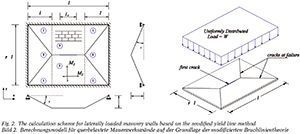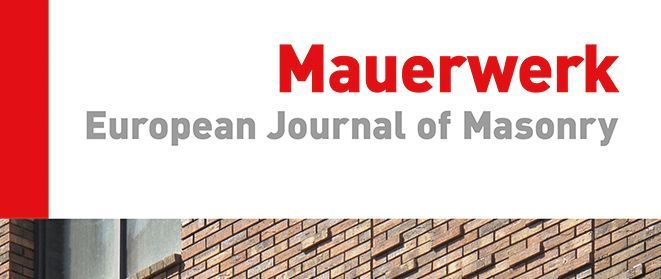Mauerwerk - European Journal of Masonry 1/2015: The bending strength of masonry
 Bending strength of masonry becomes an important design aspect especially when the walls subjected to lateral loads like, cellar walls which are subject to earth pressure, and façades/ infill walls which are exposed to the wind actions.
Bending strength of masonry becomes an important design aspect especially when the walls subjected to lateral loads like, cellar walls which are subject to earth pressure, and façades/ infill walls which are exposed to the wind actions.
Bending strength is required wherever the applied load is perpendicular to the wall. It is also required in non-load-bearing partition walls, where the load applied in both the normal and perpendicular directions. Besides, the tensile properties of the brick/block and lengthwise parameters related to geometry and materials technology also influence the bending strength of masonry. These include the thickness of the wall, the extent of overlap, and both the shear and the tensile strength of the bond. Consideration must also be given to the possible presence of mortar in the head joints, which can significantly increase bending strength, especially where joints fail.In addition to these materials technology factors, it is very important to observe the realistic influence of the boundary conditions. The degree of fixity is among the factors to be considered in calculation models.
In this contribution, two aspects are going to be observed and analysed, namely: the principles of bearing capacity under lateral loading alongside the models derived from these for cellar walls and areas of infill; and the influence of materials technology/geometric parameters on the bending strength of masonry.


